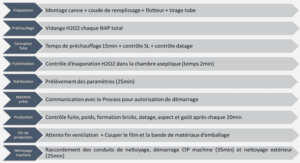MATERIALISM AND CLASS CONFLICT IN JOHN
STEINBECK’S FICTION
Steinbeck as A Social Novelist
If John Steinbeck is acknowledged and known as a great social novelist, it’s because his works made a symbolic and realistic portrayal of the life of the Poor in California during the thirties.In his literary work, he focuses on the social and economic conditions of the poor as well as their struggles in California to better live. As an example, in the intervals of his terms attendance at Stanford, he worked at various jobs on ranches and roads-gangs thus, he gained deep insight into the condition of the poor in his society which Joseph Fontenrose asserts in the following lines: He could get on with all sorts of person and he discovered the genuine human qualities of humble people while working with them he had no snobbery in him1 This statement above shows Steinbeck’s sympathy for the poor whom he describes in all of his works their conditions and struggles for survival in the American society.As far as this chapter is concerned; we will first give the definition of social novel and how to understand it through Steinbeck fictions.
An Overview of The Social Novel
Every genre has been existed and used in different period but one of the most used in literature is social novel known as social problem novel.It is a work of fiction which examines specific abuses and hardships which affect the working class. Social novel includes social issues such as gender, race, social class, working class plight or others problems linked with the society. In literature, it tooks its origins in England during the 19century precisely in the period of social, political and economic upheavals which followed the reform act of 1832.It was a way of reaction to rapid industrialization, social and economic issues associated with it and a mean to denounce industrial capitalism and the suffering of poor who were not profiting 1 Fontenrose, Joseph.1963.John steinbeck- an Introduction and Interpretation.New York: Barne&Noble.Inc P.3. 10 from England economic prosperity therefore,Charles Dickens Hard Times(1854)2 can be regarded to be an early social novel which is a critique of an industrial society on the live of the working class people in the city. Dickens was a fierce critic of the poverty and social stratification of Victorian society. In the United States, Tom wolf was arguing for American writer to write social novel in the vein of Dickens and Zola but the genre appears firstly during the prewar period precisely during the anti-slavery movement in which the practice of slavery was a great issue for many American writers particularly those in the south. They took the pen to voice out slavery by portraying the unhuman condition of slave through works of Harriet Beecher Stowe’s Uncle Tom’s Cabin3 and Incident in a Life of a Slave Girl4 by Harriet Ann Jacobs.In the nineteenth century, realist writers most of them known as regionalists for depicting the rural life embraced the genre. American realist cricticize the social inequalities brought by industry. For realists, literature is a way of speaking truth and exploring the true reality of the life. Among them Samuel Clements known as Mark Twain about Huckleberry Finn5 is a great portrayal of the effects of the new industrial capitalism in society. Huckleberry Finn was to set the way for a new kind of writing and have a lasting effect on many American writers. Afterward, the development of social novel could be noticed during the period between the first and Second World War.In the beginning of 20th century, American novelists were expending fiction of social spectrum to encompass both high and low life and sometimes connected to naturalist school of realism. The growing problems in the city become the major concern of many writers during the muckraking era.About the same time, Stephan Crane, best known for his civil war novel The red Badge of courage, depicts the ugly life of New York’s bowery prostitute in Maggie: A Girl of The Street6 .In addition to this,In sister Carry and Jennie Gerhard,Theodore Dreiser told affectively of the hard lot of the underpaid working girl in the big cities of the middle west.Futhermore, Muckrakers exposed social problems, injustice and labor abuses caused by the horrible effects of capitalism.Writers such as Norris wrote about the problems of American farmers and others social issues from a naturalistic perspective. He portrays powerfully the struggle between the south pacific Railroad (The octopus) and the wheat Farmers of California. In reality, the twentieth century is dominated by the get richer-quicker that’s mean material wealth. Materialistic motives had determined 2 Dicken,Charles.1850.HardTim.England:Bradbury & Evans 3 Stowe,Beecher,Harriet.1852.Uncle Toms Cabine.Usa:John Jewett and Company 4 Jacobs,Harriet.1861.Incident in a Life of a slave Girl.Usa:Tayer and Eldridge 5 Twain,Mark.1884.Huckleberry Finn.Usa:Chatto and Windus 6 Crane Stephan.1893.Maggie A Girl of the Street. United states : D Appleton & Company Book 11 the history of the United States from the end of the Civil War to the Great Depression. The most effective and the most popular criticism of the American materialistic society of the twenties was written by Sinclair Lewis in Main Street7 . In the 1930S, America recorded many social novels.The social, political, and economic upheavals occurred in that period has became a great concern for many writers.The latters, were portraying poverty, social inequalities and the condition of the working class of that period.John Steinbeck has published various and rich works regarded as social novels during and after the Great Depression.
Understanding The Social Novel in Steinbeck Fiction
Many writers employ all forms of literature for many differents purposes.Some of them raised question of slavery, race and gender but those of the twentieth century particularly the 1930S addressed themselves to the human and social problems of the decade. Like Steinbeck, many others twentieth century writers wrote during the Depression years.To name a few, John Dos Passos published his big money others shared a deep interest in man: each question the nature of the human creature in his way. Some suggest answers some do not Hemingway concerned with honor examined actions of people under pressure.Mencken attacked provincialism, Lewis slashed at hypocrisy. Carther studied the pioneer spirit, while Fitzgerald come to symbolize the 20s.Both Faulkner and dramatist O’Neil delved into human psyche. As for Steinbeck, he was enraged by the plight of the working class mainly the situation of the Poor. He then, understands the poor and acutely feels the tragedy of these people. His yearning is to see their condition changed which inspired and oriented his writings and this preoccupation is clearly stated when he writes: I must go over into the interior valleys there are five thousand families starving to death over there, not just hungry, but actually starving (….)The death of children by starvation in our valleys is simply staggering…I’ll do what I can Funny how mean and how little books become in the face of such tragedies8 However, for an understanding of social novel in Steinbeck’s fiction, it will be necessary to see the economic and social reason which prevailed in the 1930S. Undoubtly, if there was not no economic depression, hence the situation and the living conditions of the 7 Lewis, Sinclair.1920.Main Street. United states :Harcourt, Brace and Cove 8 Levis, Jannet “Introduction to the Portable Steinbeck’’ from Lisca, Peter.1958. The World Wide of John Steinbeck. New Brunswick: Rutgers University Press P.10-11. 12 poor could not possibly written by Steinbeck throughout his works from 1930S to 1940S.In fact, the Great Depression has a background to analyze how Steinbeck depict social aspect in his works Before the Great Depression, it was a time of economic prosperity in the USA. The era that started two years after the First World War and ended in 1929 is often referred to as the ‘Roaring Twenties’. This era, also called the “Jazz Age was characterized by technological, inventions, the Florida land boom, and the Harlem Renaissance. During that time, American total wealth more than doubled, but the prosperity was superficial. The economic situation was favorable to do so: the more stock a company sells, the higher is its value. That is why many people invested their money in stock market; they believed it would continue to grow so strong was its economy that republican president Herbert Hoover proudly declared during the Golden twenties “Prosperity was only a domestic product manufactured by republican president and a republican congress9 ‘just one year after that bombastic declaration, on October 24,1929 the wall street stock-market crashed, it come as very hard blow in the life of nation and it only be compared to the civil war. With that economic crash the depression begins. The Great Depression has changed the lives of many American peoples.The latters, were unemployed,homeless.In some states, the situation was even worsened with the dust bowl, a natural disaster of storms from topsoil on the Great Plains which drove many Americans from the Great Plains Oklahoma and Arkansas to California where the nation-wide political and social movement that grew out of this economic disaster took a more acute turn particularly in Salinas’s valley, John Steinbeck’s hometown where the situation was sharpened by the arrival of migrants. These migrants suffered from an agriculture system which is differed from that of rural areas elsewhere the Californian farms were large collective farms owned by big operators and banks and employing hundreds of workers many of them migrants. They were paid low wages for vegetable and fruitpicking.This environment also brought antagonism between two basic group capital owners using workforce one on hand, and those devoid of capital and production means on the other hand.In effect, in such environment steinbeck’s reaction is to portray in one side the entrenched power, wealth authority and consequent of the tyranny of California industrialized agricultural system which produced flagrant violations of the migrant civil and human rights and ensure their continuing 9 Ritchie, A Donald and Altoff, Margueret.1985.Heritage of The United States.New York: McMillan publishing company.P.172. 13 peonage, their loss of dignity through treats, reprisals and violence on the other side the powerless, poverty victimization. In reality, migrant farm worker existence and its hardships are first portrayed in Main Travelled Road10 by Hamlin Garland.The novel itself, exposes with strong emotional appeal the hardships and injustices suffered by the farmers in the iowa-Wisconsin. At the same vein, Tony Dunbar and Linda Kravits book entitled Hard Travelling11 depicts the working conditions and life of migrant by calling attention to the fact that migrant laborer was situated at the bottom of the class hierarchical.In the same vein, John Steinbeck examines the deplorable migrant living conditions of the farmers and exposed the unconscionable practices of the interlocking conglomerate of corporation farm during the thirties. Primarily though, his eyes was on the migrants, who were gypsies by forces of circumstances. From this great interest in the life of the working class one can regarded him as a proletarian writer.Though proletarian literature refers to any text treating working class experience but as a literary or historical category it primarily describes the Depression era literature produced largely.In a self-interview for Joseph Henry Jackson he has asserted that the struggle of the proletariat mainly poor animated his pen: Boileau said that kings, gods, and heroes only were fit subject for literature. The writer can only write about what he admires. Present day’s kings aren’t very inspiring, the gods are on vacation and about the only heroes left are Scientist and the poor…But the poor are still in the open. When they make a struggle it is a heroic struggle with starvation, death or imprisonment the Penalty if they lose. And since our race admires gallantry, the writer will dealt with it where he finds it.He finds it in the struggling poor12 This assertion indicates that the author has a great sympathy for the poor.He stand as the voice of the lower class in California in order to gain them their rights.As a matter of fact, he deals with their struggle and conditions in California in his 1930s trilogy. Similary to James T Farewell Studs Logan trilogy (1934-1935) 13 ,which provides a bleak picture of the working 10 Garland, Hamelin.1891.Main-Travelled Roads.United States :Arena Publishing Company 11Dunbar, Tony and Kravitz,Linda.1976.Hard Travelling Migrant Farmer in America.Cambridge:Balinger publisher company 12 Demott, Robert.1989.Working Day: The Journal of The Grapes of Wrath (1938-1941).New York: Viking Penguin.P.XVIII. 13 T.Farawell, James.1935.Studs Lonigan. United states: Library of America 14 class life in an Irish neighborhood of Chicago .Steinbeck’s trilogy dramatizes the struggle of Californian laborers between (1936-1939).It includes three proletarian novels which all deal with different facet of social problems linked to the migrant laborers life in california.In fact, this interest of the life of the working class people has made him one of the great proletarian writer in the thirties who ranks with proletaria such as Michael Gold.Steinbeck was inspired by the plight of the working class,his trips through the field and his experienced as migrant worker provide the main source of his trilogy. The first novel of his trilogy entitled In Dubious Battle14 is about strike and organizer. The book handles of the opposition between labor and capital. Mac McLeod and Jim Nolan, the two main protagonists are strikers who worked as fruit pickers. Both, Mac and Jim were portrayed as two communists leaders sent to facilitate a strike agricultural workers not only to get better paid in order to overthrow the capitalism in the Togas valley which treats the laboring class people with less and less consideration.Futhermore, In Dubious Battle has labeled him a red or a communist. It marked the starting point of the author’s political engagement. The main reason which seems to justify this communist attitude is that, the Twentieth Century is characterized by radical thoughts. The radical of literary tradition of the 1930S inspired many proletarian writers to become committed and very concerned with the struggle of the proletariat.Rideout argues that: A radical novel, then is one which demonstrates either explicit or implicit, that is its authors object to the human suffering imposed by socioeconomic condition system be fundamentally changed15
Dedication |






